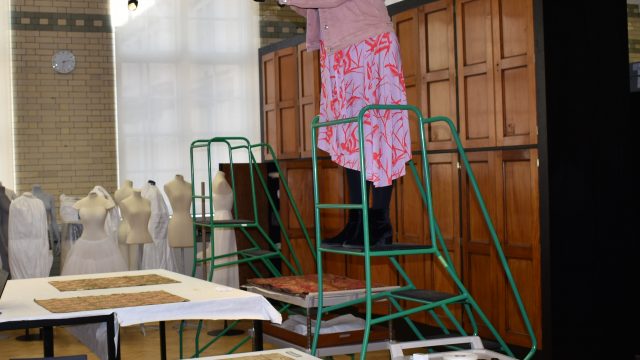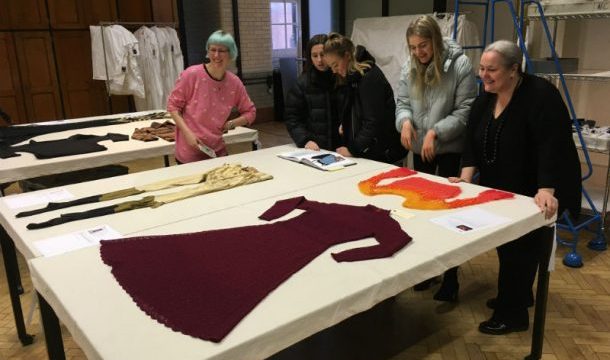
A selection of mannequins in North Court Store. © Victoria and Albert Museum, London
Possibly the greatest benefit of the move to Blythe House, at least from the point of view of managing the collection, is that we are able to organise objects along more logical lines.
Earlier this month I conducted a visual audit of our women’s twentieth-century fashion collection, with a view to establishing how many individual designers are represented, and how much space each would need at Blythe. It took three full days to complete, and the time spent in a chilly, windowless store transformed me from looking something like this into a kind of light-fearing troglodyte a bit like this. Anyway, by the time I’d absconded from the rolling stacks, I had a long list of three-hundred and sixty-five designers, the locations in which their creations resided, and how many centimetres they’d need for their storage. They range from heavyweights like Balenciaga, who is set to annex almost four metres of horizontal space, to surprisingly under-represented giants like Armani, who will need less than twenty centimetres in which to hang. Completing and sweetening the collection are a great number of pieces by relative unknowns.
Detail of T.287-1978, dress by Mariano Fortuny, 1920-29. © Victoria and Albert Museum, London
The imbalance between certain designers is due to the manner in which we acquire objects. Many things simply are not available at auction. Coupled to this is the human sentimental attachment to garments, which can outlast their usefulness and currency in fashion, leading to items being kept in wardrobes, attics and boxes for many years. As such, many of our acquisitions are donations or bequests, which can lead to surprising gaps in the collection. We can’t always, after all, collect what is not available to us. Each department follows a carefully established collecting plan in order to improve the breadth of the collection and ensure that we are not encroaching on the curatorial provinces of other institutions. It is this policy which can contribute to the perceived unevenness in many of the Museum’s collections.
In total, our women’s dress will occupy eighty-three metres of hanging space, with room to expand in case we’re able to fill those gaps. In addition to this are the ‘wardrobe’ collections of clothing. These are not only valuable donations because of their labelled content, but also represent a history of an individual’s sartorial taste, and are thus important documents of social as well as fashion history.
T.934-1994, Coat by Jean-Charles de Castelbajac, 1990-91. © Victoria and Albert Museum, London
At Blythe, the objects are being installed alphabetically by designer which, as well as being immensely appealing to the Pliny in me, will result in a very efficient appointments system at the Blythe House, as we’ll be able to quickly locate what we’re looking for, as well as having the opportunity to see other examples of a designer’s output which will surround what we seek.
T.303-1985, jumpsuit by Hauser Sport, 1970. © Victoria and Albert Museum, London
The Clothworkers’ Centre for the Study and Conservation of Textiles and Fashion is part of FuturePlan and will be open to visit by appointment later this year.




